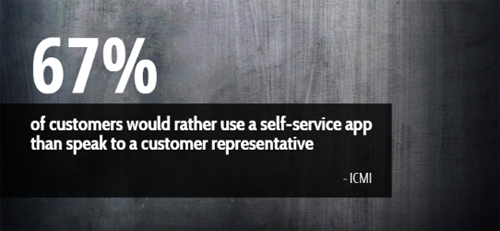5 Ways Web Automation Improves Online Customer Experience

:: By Ohad Rozen, Toonimo ::
By the end of next year, 89 percent of companies predict that they will separate themselves from their competition on the basis of customer experience-more so than product and service.
For many of these companies, well-executed, creative automation will become the differentiating factor in online customer experience. Here are five ways automating their online storefronts improves customer experience:
1. Enhance Personalization
Fifty-sixy percent of customers report feeling more inclined to shop at a retailer that offers a good personalized customer experience. Business can make a customer's online experience more personal by automating simple things such as using a subtle greeting at the top of a page (e.g. "Welcome Back" for returning customers), to more sophisticated actions like cross-selling, to recommending products to individuals.
2. Augment Self-Service
We are currently living in the self-service generation. Multiple indications analyzed by Forester show that consumer self-service is growing. Sixty-seven percent of customers would rather use a self-service app than speak to a customer representative, according to research by ICMI.

Furthermore, Zendesk reports that 91 percent of customers would use online service if it were available to them (in this case a knowledge base) and 40 percent of the people calling customer service centers already tried solving their problem on their own. Customers want to help themselves, but they need help doing it. Digital walkthroughs and automated helpdesks are the perfect solution for online self-service.
3. Make Customers Feel Valued
Customers deserve to feel that the businesses they choose care about them. Customers who seek online interactions provide businesses with the opportunity demonstrate that they care. Businesses can do that by providing their customers with an enhanced experience and a website that caters to them. Placing automation in the right places-whether it be guiding them through a website's features or a product upgrade-show customers that their needs are being addressed and businesses are thinking about them. Regarding the speed that automation can provide, Forrester research indicated that 66 percent of customers reported that the most important thing a company can do to provide good online customer service is value their time.
4. Boost Engagement
A company's timing and targeting affect the way its customers interact with it. Automated elements that incorporate those features boost engagement. One such example is triggered emails-emails that are sent based on a customer's interaction with a website-which are opened four times more frequently than newsletters, according to Econsultancy.
5. Reduce Friction

Every business loses customers as they move down the conversion tunnel, while some simply fall off because they cannot find the information or product they wanted.
Automated tools allow companies to highlight their key products and services, while keeping their customers on track. Customers who understand what a company offers and find the services their looking for have a much more favorable experience than customers who struggle with a website: 45 percent of customers who cannot address their questions and concerns online, abandon their purchase, Forrester reports. Automation can also prevent other customer errors, such as submitting a form with incorrect or incomplete information, before they happen. Particularly for repeat customers, items like shipping or billing information can be automatically completed for a customer to review, and change if necessary.
Moving Forward
As companies continue to explore automation and the customer experience domain, we are likely going to see automation become more human. Advances in artificial intelligence and the creation of sophisticated decision engines will allow companies to build websites that create humanized interactions with their customers. In the future, the widespread implementation of automation throughout a given website will allow it to thoroughly fill the roles of customer service representatives and sales staff: websites will be able to make product recommendations like seasoned sales professionals and provide humanlike customer service, wherever or whenever a customer might need it.
This style of interaction will intensify as companies begin to integrate across channels. Customers will be able to interact with a company in person, online and over the phone seamlessly; information from product inquiries and service requests will be shared across channels, allowing customers to pause or continue a process from any platform they choose, without needing to repeat the same steps.
Ohad Rozen is a customer experience expert and the CEO of Toonimo, the leading customer experience platform.
Subscribe to Our Newsletter!
Latest in Software








